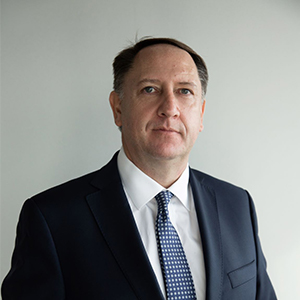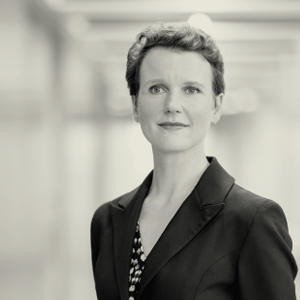Everywhere you look, dark clouds are in view. The combined challenges of war, pestilence, climate change and inflation – described with dramatic intent by some commentators as The Four Horsemen of the Apocalypse – are creating a spectre of a global future that few currently dare to name: the R-word.
In undoubtedly turbulent times, MEttle asks three leading financial experts to look above the tempest to describe what in their view is causing the current environment in which we find ourselves, what they anticipate is coming next, and how New Zealand businesses should prepare, adapt, and change over the next five to ten years to drive their future success.
Sean Keane has a career that spans 35 years within the financial sector in a variety of senior roles. As Founder and Managing Director of Triple T, he provides policy advice to central banks and regulatory authorities in Asia-Pacific as well as market analysis and interpretation to a variety of hedge funds, asset managers and commercial banks around the world. In 2012, Sean joined Jarden as a non-executive director, and he is also Chair of Pearlfisher Capital.
Sharon Zollner joined ANZ’s Economics team in 2010, becoming Chief Economist in late 2017. She started her career as a macroeconomist at the Reserve Bank of New Zealand in 1998 and has also worked at the Central Bank of Norway.
Mark Averill is CEO and Senior Partner at PwC New Zealand. Since 2016, he has been responsible for the executive leadership, strategy, and all aspects of the New Zealand firm’s relationship with other PwC member firms and PwC Global. He sits on the PwC New Zealand Board, PwC Asia Pacific Leadership Team and PwC Americas-Asia Pacific Leadership Team. He brings more than 35 years’ experience, including over 20 years as a Partner at PwC.
The death of the thee great deflations
Mark Averill begins by acknowledging the extraordinary pace of change we’ve seen in recent years and that we are all leaning into some new realities.
“When you look at the megatrends, the global environmental factors reshaping the world we live in, these are all changing at an incredible rate. From shifts in global economic power, demographic and social division, technological advancements, as well as climate change and increasing resource scarcity, there is no doubt we’re experiencing an interesting time in history.”
“All these challenges are bringing the threat of dark clouds, such as geo-political tensions, wars, post-Covid supply issues, an inflationary environment, as well as global warming and an energy crisis – to name but a few.”
“To solve these complex and difficult issues it will take strong and bold leadership. But we can’t ignore the fact that we have not operated in an inflationary environment for a very long time. There are many business and political leaders that have no experience of it, and for those who have, it’s well in the past and the memory of it is long gone. Leaders are navigating an unknown path which adds to the challenge.”
Sean Keane picks up this baton, agreeing that right now there is plenty to occupy executive leadership teams. Specifically, he cites the end of ‘three great deflations’ from which we have all benefited significantly over the last 30 years.
“The three great deflations have changed the way the world and businesses operate, including how we plan our supply chains and manage our labour markets. Their departure has also brought an end to the era of ultra-cheap money, and the financial repression of zero and even negative interest rates. There is now much greater awareness that the costs of doing business are higher, that the certainty of supply is lower and that the world is now a much more complex and dangerous place.”

We can't ignore the fact that we have not operated in an inflationary environment for a very long time. There are many business and political leaders that have no experience of it.
The first great deflation Keane talks about is globalisation, and the opening of markets such as China, and to a lesser extent India, Mexico, parts of Latin America and some of North Africa.
“Globalisation over the last three decades brought more than a billion people into the supply chain as producers and consumers of goods that were manufactured in emerging markets at a much lower cost than was previously available. New factories and manufacturing facilities massively increased production and output, quality improved, and consumer prices actually fell. The resulting goods deflation delivered an economic tailwind the entire world has enjoyed.
“Peak globalisation had likely peaked even before Covid as various countries began displaying more protectionist tendencies towards trade, and the pandemic accelerated the downtrend by lowering confidence in the robustness of the global supply chain. The response has been an increase in nearshoring and onshoring of production, as organisations and governments accept that there is an uncomfortable trade-off between security of supply and the cost of production. The outcome is more production being undertaken closer to home, but at a higher cost.”
The second great deflation that peaked during the pandemic was the relatively easy movement of cheap labour across international borders. Keane states that “globalisation and the establishment of long multi-faceted supply chains created demand for cheap labour that brought workers from emerging economies into the global market. Pre-Brexit Britain welcomed qualified workers from Poland and eastern Europe into the UK. They brought needed services and skills that helped keep prices down. The combination of lower labour costs and cheaper goods imports delivered lower prices and goods deflation to consumers. Companies were able to hold their prices while still making more money.”
The last great deflation is all about energy. Keane cites the example of Germany signing up to take Russian energy exclusively, which made them almost 100% dependent on Russia.
“This undoubtedly gave the German economy a great deal in terms of price, but it came at the cost of national security. Much of the German economic miracle of the past 35 years was based on very cheap energy inputs, that allowed the German automotive and heavy industry to thrive. The energy subsidy has now been removed following the Russian invasion of Ukraine, and German’s are consequently having to adapt to triple digit increases in energy costs.”
Walking the tightrope of friendshoring and geopolitical change
Connected to these dying deflations are the tectonic changes happening in the geopolitical landscape, such as the Ukraine conflict and the rise of China, creating navigational challenges for New Zealand and organisations based here. Averill cautions that global geopolitical change means New Zealand’s positioning on these factors has an important impact on business.
This is supported by Keane, who says that “New Zealand has walked the narrow line between West and East well, but we are at a point where we’re going to have to make a call one way or another. The Americans are pushing for a harder line on China, and it’s a role that Australia has willingly accepted. Our New Zealand Defence policy is effectively ‘Australia’, and they are saying to us: ‘you’re hiding under the umbrella of our protection, but taking advantage of these opportunities to occupy markets Australia is now blocked from because we’ve spoken up’.
New Zealand has walked the narrow line between West and East well, but we are at a point where we're going to have to make a call one way or another.
“However, New Zealand’s reliance on China is huge, with $21.5 billion in exports and $15.5 billion in imports. New Zealand’s exports are heavily focussed on the Primary sector, with dairy production leading the way. Our export basket is narrower than Australia’s, however, and we have fewer industries to fall back on in difficult times. For a long period now, we have enjoyed the benefits of China’s demand for our dairy products and baby milk powder as there are few reliable suppliers elsewhere.
“Unless we get access into the US, we must continue to sell where the market is, but we need to work hard to lessen our reliance on China because we are too vulnerable to a single market. The US has said that it wants to aid its friends in the region, otherwise known as friendshoring, and that could provide us with the opportunity to build business in the US and diversify away from the China concentration risk.”
The end of debt super-cycle and global labour movement
Sharon Zollner says it feels like we have come to the end of a debt super-cycle, that has lasted decades.
“For a long time globally, we have finished every business cycle with lower interest rates and more debt than we finished the last one. Interest rates have been trending down for 30 years. How many investors can remember a period when that wasn’t the case? Part of that reflects the very welcome initial success of inflation targeting in bringing inflation down, then global deflationary forces took up the baton, and in recent years the extreme lows of interest rates have been more about policy choices – and, with hindsight – mistakes.
“However, the unintended consequence of interest rates trending ever lower is that people have been able to take on much more debt. That’s fine as long as interest rates are low to lower. But we are now at a sharp turning point, and it’s a bit messy and has the potential to become a lot more so, depending on how high inflation and therefore interest rates end up going.”
Zollner says that she is seeing this everywhere.
“The level of global debt – including government, business and household debt – has risen in response to the incentives and opportunities presented by a low interest rate environment. Central banks are raising interest rates at a startling speed in response to dramatically higher inflation.
“While there is concern about how borrowers will cope with the abrupt change, given high levels of debt, the fact is real interest rates are still relatively low currently. In the New Zealand context, the highest mortgage interest rate is only a smidge higher than CPI inflation – and lower than wage inflation. We’ve had real interest rates much higher in the past than they are today – but not with global debt at these levels. So the angst about how this could all play out is well founded. The consequences will play out over a medium-term timeframe.”
At the time of MEttle’s interviews, the 2 year swap rate touched 5% for the first time since October 2008. Keane agrees that interest rates are higher than they were, while agreeing with Zollner that it is not particularly unusual.
“The swap market began in New Zealand in the mid-1980s and the average rate over the 40-year period is circa 4.96%, so interest rates have gone up a lot, but overall, we’re back to the average over time.”

Interest rates have been trending down for 30 years. How many investors can remember a period where that wasn't the case?
Where it began to turn, says Keane, was Covid and the interruption of supply chain, followed by the Russian invasion of Ukraine and the interruption of food, oil, and natural gas supplies. These caused a squeeze on inflation which was compounded by the lack of movement and availability of labour.
“Everywhere there is a shortage of labour,” he says. “And where did the labour force go? They have all been forced to go home. Everyone’s supply of labour has been interrupted and that’s caused a huge challenge where inflation is now becoming self-reinforcing.”
Where did the labour force go? They have been forced to go home.
Time for a controlled burn to avoid a great conflagration?
Zollner predicts that after a demand boom such as the world has seen in recent years, some degree of ‘bust’ is inevitable, whether deliberately engineered by central banks or precipitated by something else. Either way, part of the healing process will be that we must pay the piper.
“Recessions are like controlled burns in a forest; they are scary but necessary. If you don’t allow them to happen, and thereby remind people that risk is a thing, you’re potentially piling up fuel for a great conflagration. That’s my biggest concern for the next 5 years: the fix-it-quick strategies we’ve been relying on are hitting their limits.
“Typically, when equities or the property market fall and economies go into recession, policy-makers rectify it by increasing government spending, printing money or cutting interest rates. But inflation limits central banks’ ability to cut interest rates, and many countries have levels of fiscal debt that are unsustainable. Rich countries have behaved like developing economies for several years, running any level of deficit they want and thinking it won’t have any long-term consequences.
'Deficits don't matter' fails the 'too good to be true' test.
“The extreme of this notion is ‘modern monetary theory’, which implies that deficits don’t matter a jot; if you issue debt in your own currency you can just keep selling it to yourself indefinitely, with no difficult choices required. This fails the ‘too good to be true’ test. What happened in the UK recently was a shock to the system and showed fiscal policy has limits too – and they’re not far off for some countries. If you play fast and loose with the market’s trust that you’re a reliable player, you will lose the ability to issue debt in your own currency on acceptable terms. People haven’t wanted to believe it, but the market has a way of imposing limits itself when things have gone too far.
“If your debt is in your own country and it gets to a level where it becomes problematic – where paying interest on it chews up big chunks of your budget – the markets may start to question its sustainability. If the wall starts approaching, there are three options: Firstly, austerity forever; second, you can default, which would bring down large parts of your financial system; or as a last option you can inflate it away. One of those solutions is a lot less painful than the others and has been chosen by politicians’ repeatedly over history.
“The whole future of inflation targeting is up for grabs at this point. We are assuming that politicians will allow central banks to do what is required to get it back to target and accept the consequences. This is a large assumption. Inflation targets could be raised. The whole regime could be parked for a few years. It’s not written in stone.”
Keane looks back to the 1980s, when central banks were given the mandate to control inflation, saying that every cycle of government has stepped back in terms of economic management.
“The economy works with two levers: monetary and fiscal policies. Up until the mid-1980s, governments ran the economy and would add liquidity through fiscal stimulus, or withdraw it through reductions in spending, and the economy would thus speed up or slow down, and inflation would rise or fall.
“Since the late 1980s, when central banks were first given the mandate to control inflation, governments have stepped back in terms of their direct economic involvement, and they have outsourced responsibility for economic management to their central banks.. This was entirely appropriate at that time as the western world was suffering from both high levels of unemployment and high levels of inflation, and the political appetite to bring inflation under control via direct government action was lacking.
“That approach was maintained for at least 10 years too long however, and one of the reasons that we ended up with over-inflated equity markets and asset prices is because central banks kept rates too low for too long in pursuit of their inflation mandate. When the traditional monetary policy interest rate tool proved ineffective in raising (rather than lowering) inflation the central banks deployed unconventional policies such as buying government bonds and other assets to stimulate risk appetite and demand.
“What should have happened was that as interest rates fell below approximately 2%, governments should have become more fiscally active via cuts in direct and indirect taxation, which would have reduced the pressure on the central bank and interest rate policy. This would have allowed interest rates to remain close to 2%, and avoided some of the distortions – both social and economic – that inevitably result from central bank decisions that target specific asset prices. In many cases these decisions have had the unintended outcome of widening inequality and left the central bank open to accusations that it is acting well beyond its mandate.”
What is the likely outcome?
Keane suggests in Q1 and Q2 2023 we will see a rise in global unemployment.
“It’s not a popular view, but it will happen. In New Zealand we’re close to the lowest unemployment rate we have ever had, and you don’t get a recession or a slowdown with unemployment this low. The central bank therefore needs to engineer a higher level of unemployment to achieve a better balance between supply and demand in the domestic economy. That will slow consumption and allow employers to resist increasing wage demands that will inevitably result in the stagflation that is delivered by a wage-price spiral.
“As unemployment rises, central banks will execute on their mandate, which is inflation targeting.”
He points out that for this rebalancing to take place, government must recognise that rising unemployment is a necessary part of the adjustment, and that they resist the political temptation to put pressure on the central bank to add more stimulus.
“It is uncomfortable, but we need to accept a higher level of unemployment. All we’ve done by pushing interest rates down to such extraordinary low levels in recent years is pull forward consumption. There has to be a period now where we flatline and growth slows – but that is an uncomfortable state which we are going to find out with house prices.”
Zollner agrees.
“Every business cycle ends with a recession by definition, so I am confident this one will as well! We have been living beyond our means globally for a long time. Here in New Zealand our current account deficit has blown out to 8%, which is the same as it was just before the Global Financial Crisis. That’s a reflection of the unsustainability of our recent spending.
“The Reserve Bank has the tools to make people spend less, but the question is how far they need to go before people get the message.
The Reserve Bank has the tools to make people spend less, but the question is how far they need to go before people get the message.
“Unfortunately for millennials, they have borne the brunt of the whole Covid policy response. This includes the decline in housing affordability and the overall debt they’ve had to take on to get into the market – which is now falling and putting them into negative equity. The fiscal response will affect them most as they are the ones who are going to be paying the debt back. And when you consider things like mental health and school dropout rates, its clear young adults have paid a high price for the health response as well, largely for the benefit of a different demographic cohort. All of these things will have consequences for 50 years.”
She suggests that while uncertainty is extreme, it is useful to look back to at least the 1970s when considering the range of potential outcomes.
“We must open our minds to possibilities that we thought had been ruled out.”
So, what can companies do?
Mark Averill says that despite the dark clouds ahead, there are shards of light which give reason to be optimistic.
“There is no doubt that the change we’ve seen will only continue – in fact it’s inevitable and is likely to happen at a much faster pace. Through this uncertainty there is also optimism. This has come from the resilience demonstrated over the last decade and proven business economies.”
He adds that what we do over the next two years will significantly influence how we fare over the next ten. This requires new approaches – and new levels of agility – from business.
“How you adapt now will be a big determinant in your long-term success. Organisations need to be increasingly agile within this environment. I look at the situation with Ukraine, businesses made the decision to exit Russia in 14 days. The pace at which businesses are responding has quickened dramatically.”
He believes that to meet this demand the operating rhythm of the boardroom needs to be more agile.
“Gone are the days of only long-term planning. Instead, you need to continually assess – and reassess – in order to adapt to the changing environment.”
Looking ahead, Averill says that nothing short of transformation is going to be the key for leaders of organisations.

Businesses also need to look beyond their traditional stakeholders – to the values and expectations of their employees, customers and the broader communities. This will be fundamental to remain relevant.
"Transformation is essential to remain fit for the future – it’s a non-negotiable. However, this can be cumbersome for larger organisations. Around the world we’re seeing many simplify or diversify their portfolios to deal with the transition. Once through the change, once they’re fit for the future, they’ll then grow and scale.”
“And there are some big questions to ask. How do you deal with energy transition, climate change, and the massive reallocation of capital required? This alone will really push change over the next period.”
Averill says other areas of transformation needed for greater prosperity include creating a future-fit workforce, and unlocking innovation and entrepreneurship. Trust is also high on the agenda where businesses can no longer just focus on creating shareholder value through their financial performance.
“Businesses also need to look beyond their traditional stakeholders – to the values and expectations of their employees, customers and the broader communities. This will be fundamental to remain relevant. And this is where trust comes in. As the stakes get higher, trust becomes an absolutely essential factor in how businesses operate and deliver their strategic ambitions.”

